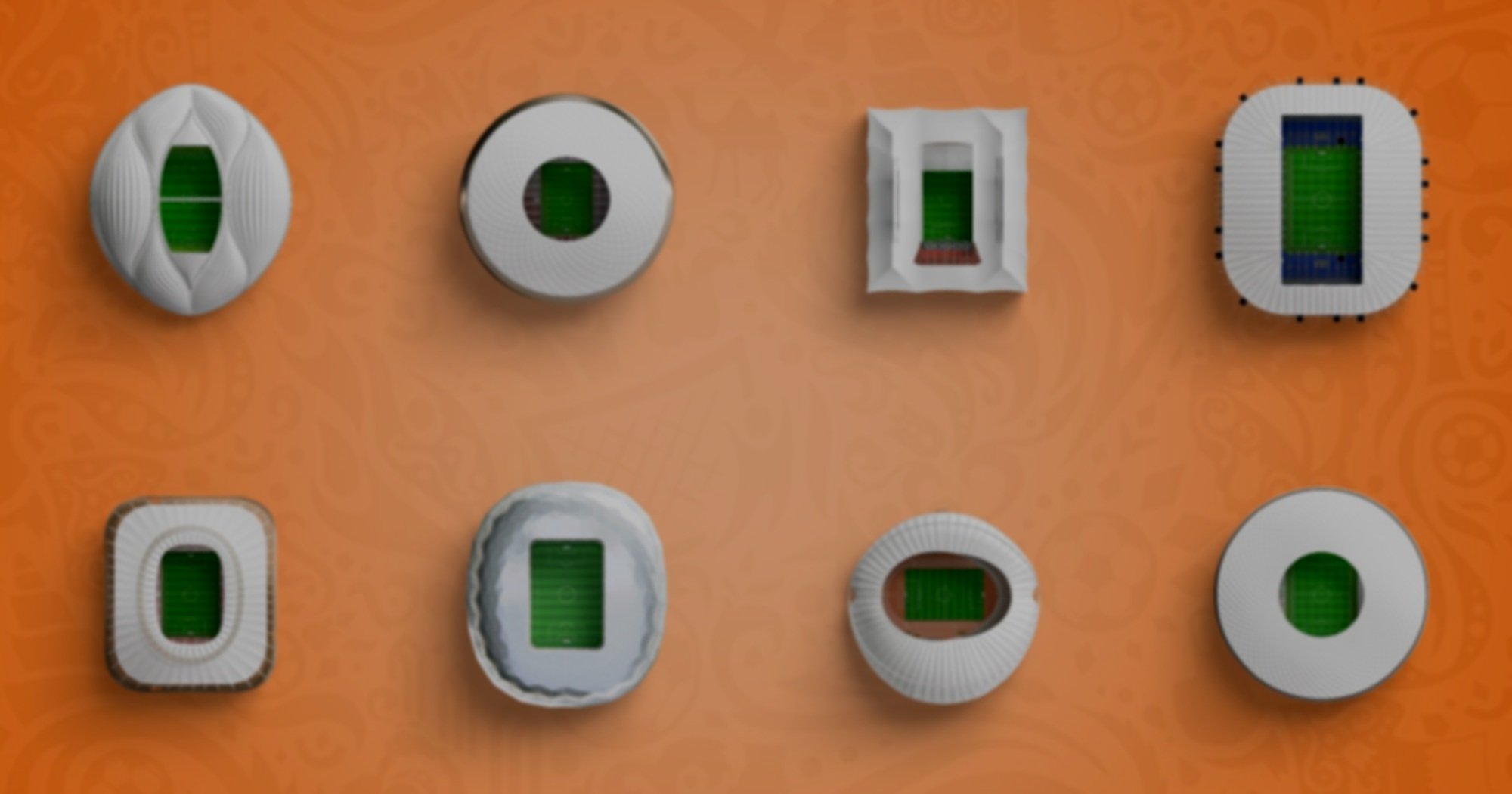
Qatar World Cup Stadium 2022
WIN 1,000,000 SDG WITH MB LUBRICANTS
WIN 1,000,000 SDG WITH MB LUBRICANTS
The sleek and bold design of this arena will leave football fans stunned
Lusail Stadium will host the FIFA World Cup Qatar 2022™ Final – an event that will secure its place in football and architectural history. Immense yet exquisite, the scale and splendour of this arena are a wonder, built to lie in harmony with its surroundings.
The design reflects the hand-crafted bowls found all across the Arab and Islamic world during the rise of civilisation, while interplays of light mirror the fanar lanterns of the region. With the passing of time, the golden exterior will fade replicating aged metal handicrafts to create a venue alive with cultural character.
On 18 December 2022, 80,000 fans will come together here for the greatest FIFA World Cup™ Final ever. Afterwards, and in keeping with Qatar’s dedication to sustainable development, Lusail Stadium will be transformed into a community space of schools, shops, cafés, sporting facilities and health clinics. This is the amazing we’ve all been waiting for – the here, the now and the future.
Qatar has built seven stadiums for the World Cup finals as well as a new airport, metro system, series of roads and about 100 new hotels. An entire city has been constructed around the stadium which will host the final match
Let’s Find out about them
uniquely Qatari stadium, to rival the best in the world
A strong futuristic representation of Qatar's drive to reach beyond its shores
Al Janoub Stadium lies in the southern city of Al Wakrah, one of Qatar’s oldest continuously inhabited areas. A city rich in history but with its sights set on a new horizon – the future of football. As the FIFA World Cup 2022™ plays out, the world will be invited into some of the most unique stadiums ever built for the beautiful game – Al Janoub Stadium sits firmly in that category.
The stadium’s captivating design reflects the wind-filled sails of Qatar’s traditional dhow boats – in tribute to Al Wakrah’s fishing and pearl diving past. For centuries these beautiful crafts have sailed through Gulf waters and far beyond, returning laden with the sea’s bounty.
After the tournament, Al Janoub’s capacity will be reduced, with seats donated to other sporting projects around the world. This will also guarantee an electric atmosphere for Al Wakrah SC matches. Beyond football, the venue’s is surrounded by luscious parkland featuring sport and leisure facilities which will benefit the whole community for years to come. The future is bright for this wonderful arena.
The gateway to the desert with a stunning exterior telling the story of Qatar
Ahmad Bin Ali Stadium stands proudly in Umm Al Afaei– one of Qatar’s most historic cities and home to the famous Al Rayyan SC. It is located right on the edge of the desert, the scene of many Qatari tales that live close to the hearts of the locals – a welcoming people who love their football as much as their fascinating past.
The stadium’s design, and that of its surrounding buildings, mirrors aspects of the local culture and traditions. The intricate façade reflects the undulations of sand dunes while intricate geometric patterns reflect the beauty of the desert, native flora and fauna, as well as local and international trade. It is the perfect home for Al Rayyan SC when the tournament ends.
More than 80% of the construction material came from the original stadium that previously occupied the site, while existing trees were also carefully retained. When fans visit, they will be able to travel via an environmentally friendly new Doha Metro system – complementing a truly sustainable venue experience.
Combining the power of football and knowledge
Education City Stadium is an extraordinary venue. It shines a brilliant light on Qatar’s position as a dynamic learning hub for students and academics across the Arab World and beyond. Its namesake location, Education City, is a vibrant centre of learning and knowledge. The arena is empowered by its neighbouring universities whose corridors buzz with new ideas and stories of cutting-edge research – expressing visionary talent and innovation.
The stadium’s ultra-modern design blends seamlessly with traditional Islamic architecture. On the exterior, triangles create complex diamond-like geometrical patterns that sparkle as the sun moves across the sky. At night, a digital light show illuminates the façade – giving fans a remarkable surprise performance.
Around the campuses, you’ll discover many first-in-class sporting and leisure facilities. After the tournament, more amenities will be added to the stadium precinct – keeping locals and the academic community fit for the future and stimulated outside the classroom.
A big win for innovation and sustainability
Stadium 974 made history even before its first match. Constructed entirely from shipping containers and modular steel, it is the first fully demountable covered football stadium – showing Qatar’s commitment to cost-effective sustainability and daring design.
This unique venue pays tribute to Qatar’s long-standing tradition of worldwide trade and seafaring. Not only is 974 the international dialing code for Qatar, but it is also the exact number of shipping containers used in construction. Situated in the portside area and in sight of Doha’s coastal cityscape, fans at Stadium 974 will feel the cool breeze as it rolls in from the Arabian Gulf.
After the tournament, the containers and super-structure will be reused. A waterfront development boasting fabulous facilities for the local community will spring to life, as well as a dynamic hub for business. This new concept in venue development ensures that while Stadium 974’s physical presence may be temporary, its legacy will be everlasting.
The emotive design tugs at the heartstrings of Qataris and people across the region
Al Thumama Stadium’s dynamic and imaginative shape celebrates local culture and traditions just as much as it does a new era for stadium design. This particular venue also has a significance that is close to the hearts of locals and resonates across the region.
Its bold, circular form reflects the gahfiya – the traditional woven cap adorned by men and boys all across the Arab world. An integral part of family life and central to traditions, the gahfiya symbolizes the coming of age for youth. A time of emerging self-confidence and ambition that marks the first steps into the future and a realization of dreams, it is a fitting inspiration for this one-of-a-kind stadium.
Fans’ first glimpse of Al Thumama may come from above, as many international flights descend over the venue. Its brilliant white exterior stands out amid its lush green surroundings – areas for play and relaxation. Al Thumama Stadium brings a vision beyond its inspiration and purpose – marking a coming of age for the beautiful game.
A sporting legend re-energised
Khalifa International Stadium has hosted a long list of momentous sporting events since its inauguration in 1976. In fact, rarely is football or athletics mentioned in Qatar without referring to this venue. Naturally, the stadium received a complete refit for the FIFA World Cup 2022™ as a reward for its long-standing service. On reopening in May 2017, it played host to the Amir Cup Final – the club football event close to the hearts of all Qataris.
The stadium’s magnificent dual arches were always its most recognizable features. These remain intact – but now feature a wide canopy stretched out below them. This complements the stadium's cooling system to maintain a comfortable temperature for players and fans alike.
The new tier added 12,000 seats, while digital lighting and a modern façade brought new sparkle to an old friend. Having previously staged the Arabian Gulf Cup, the FIFA Club World Cup™ and IAAF World Athletics Championships, this venue is ready to excite the world as part of the greatest football show on earth.
Follow us On Social Media


